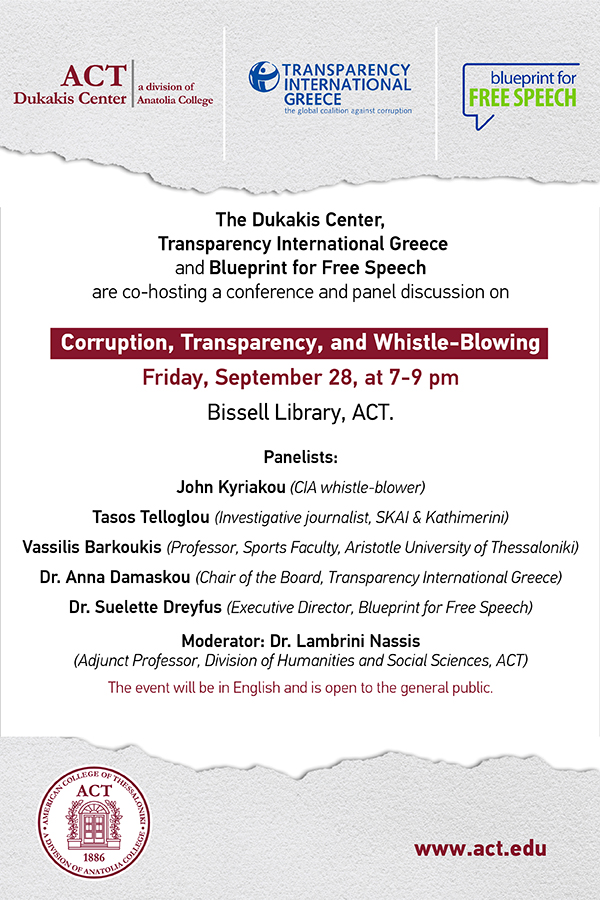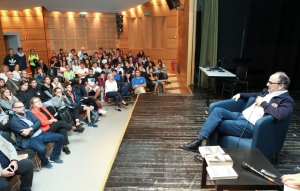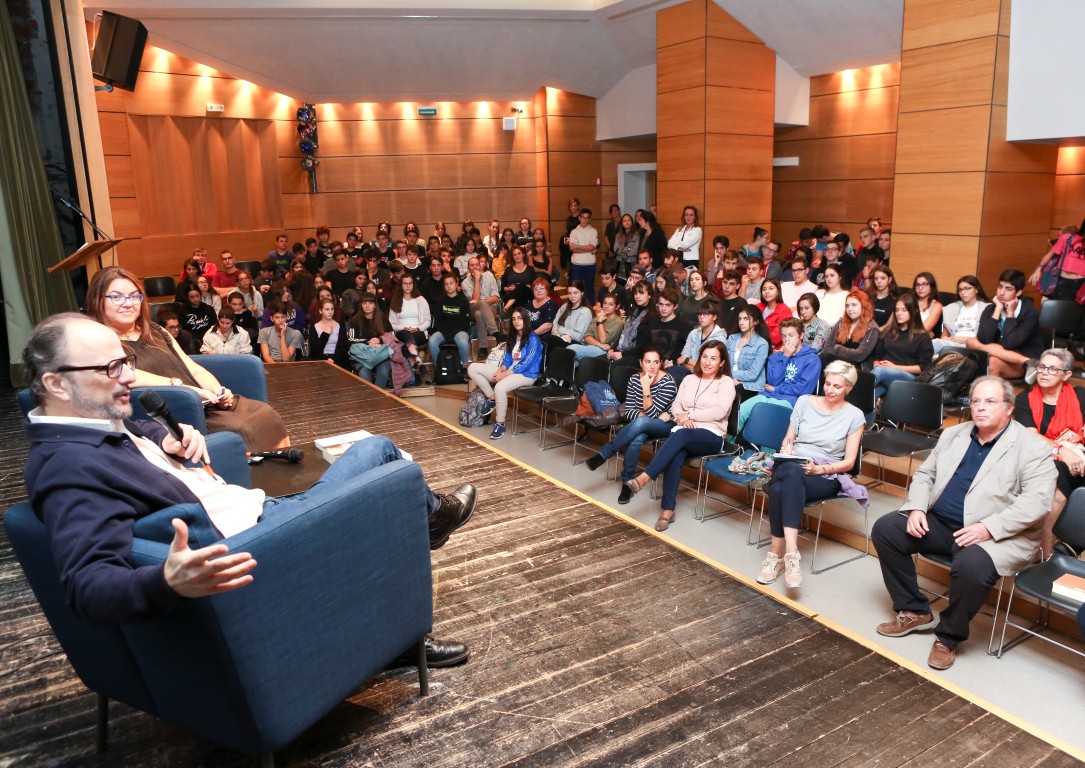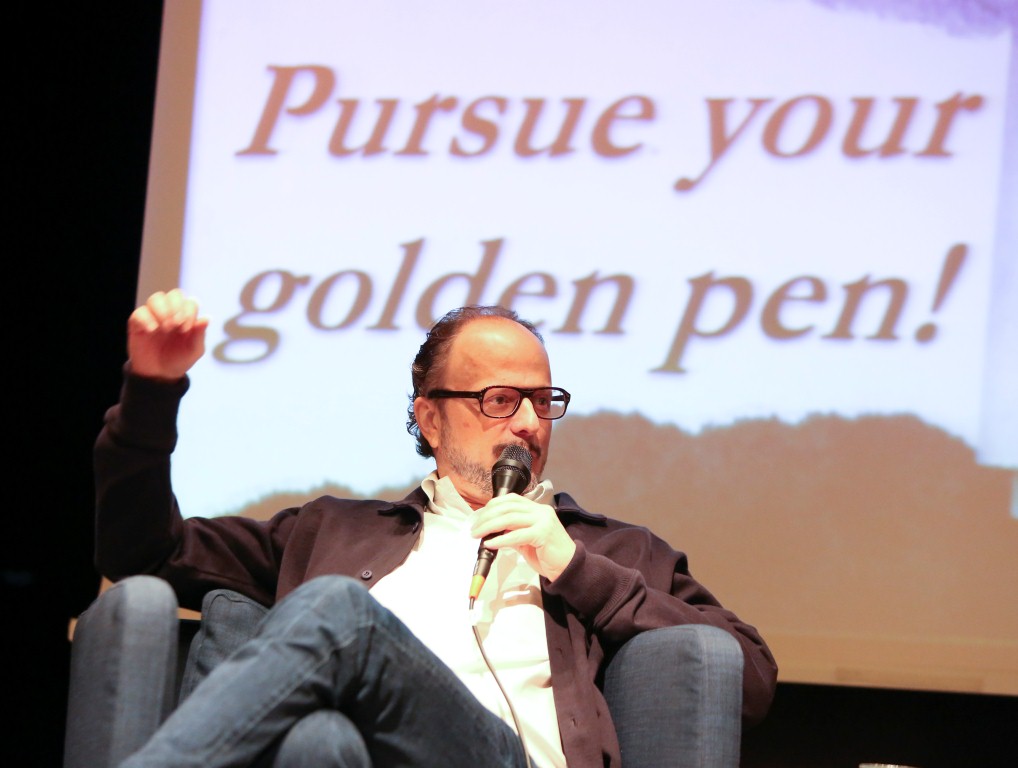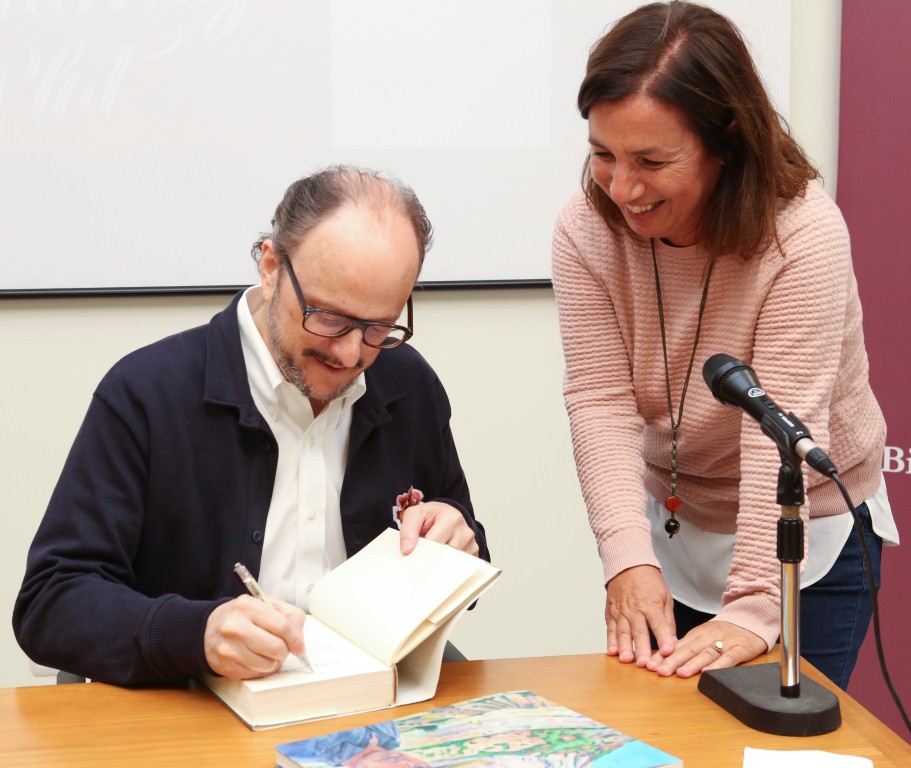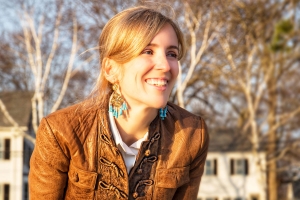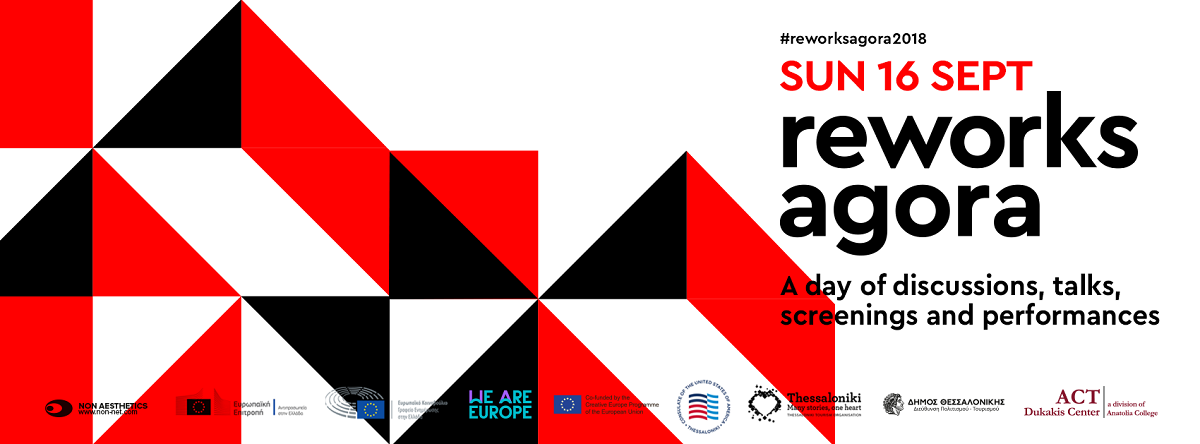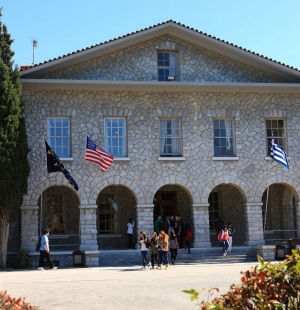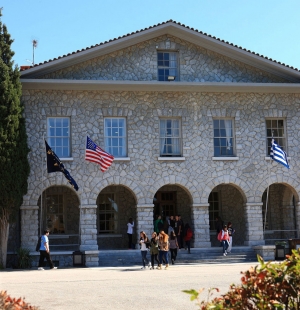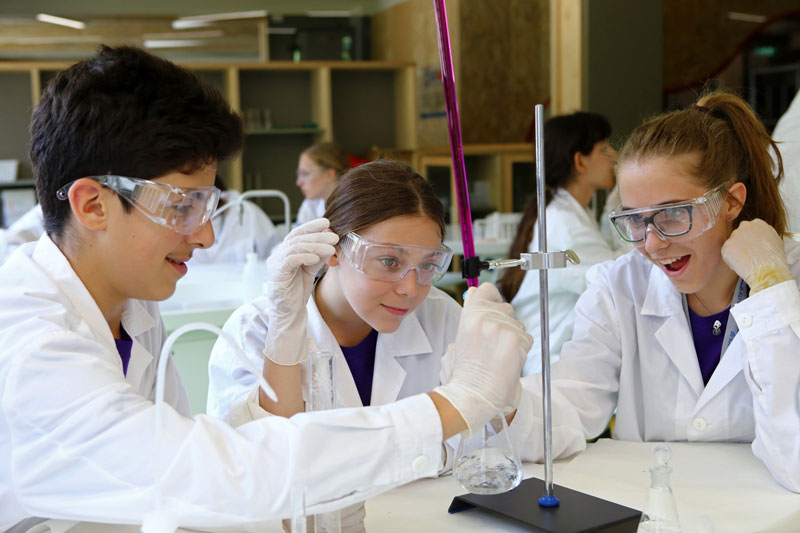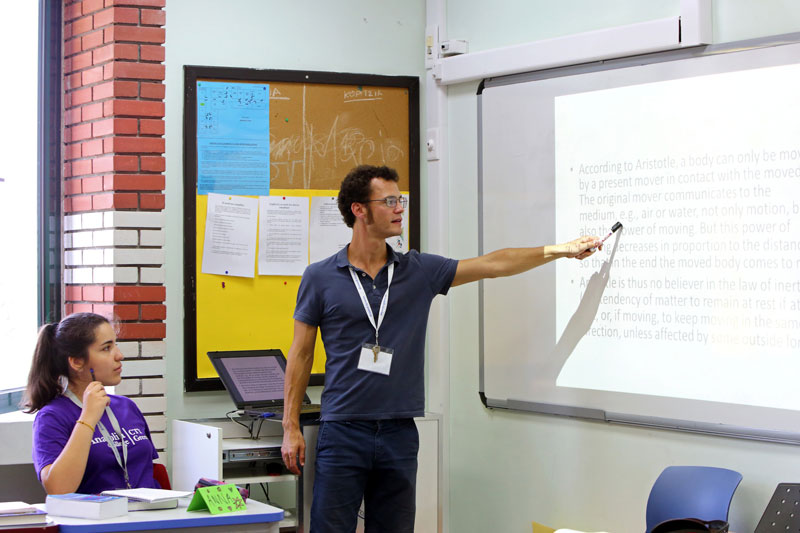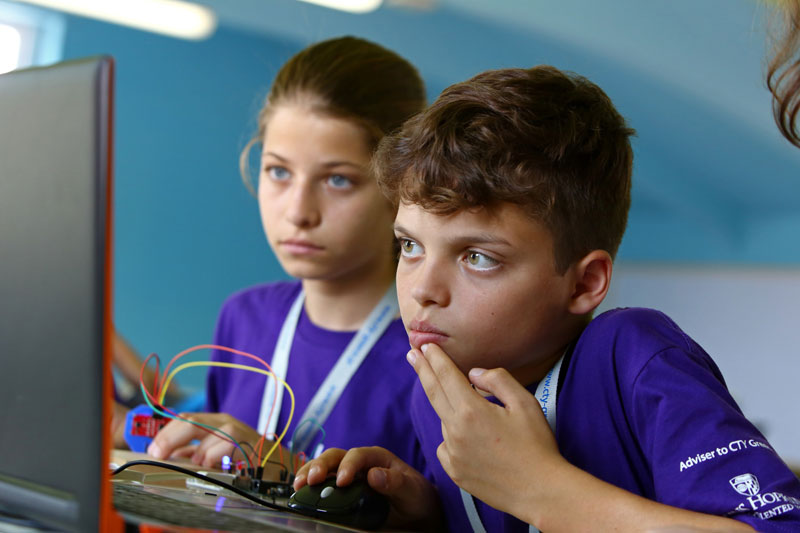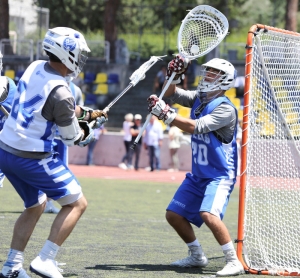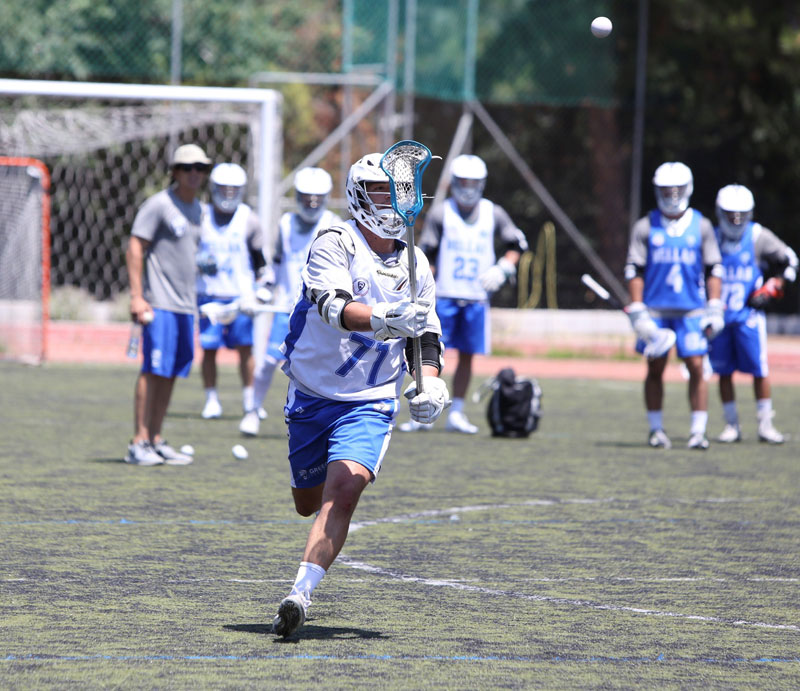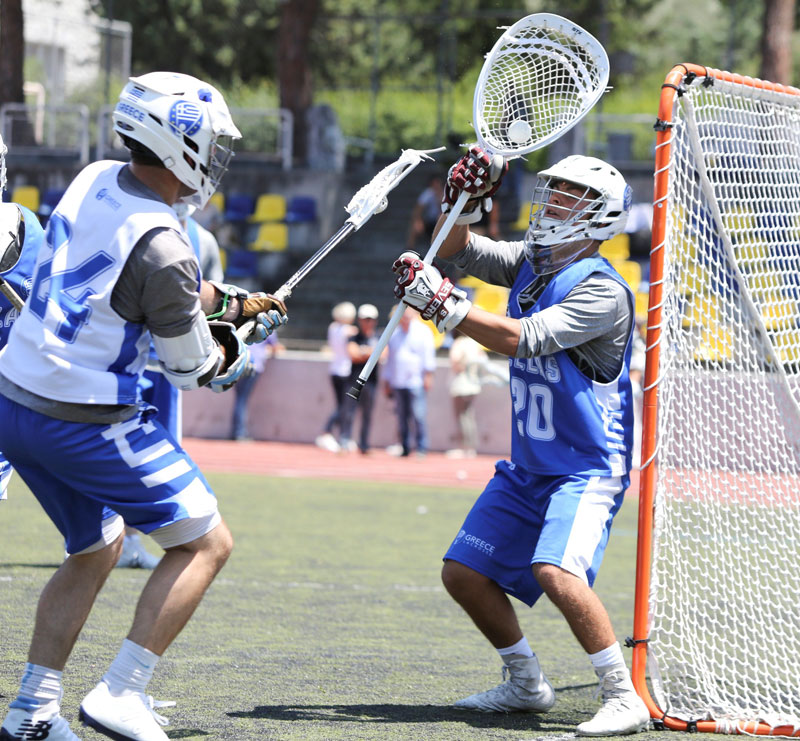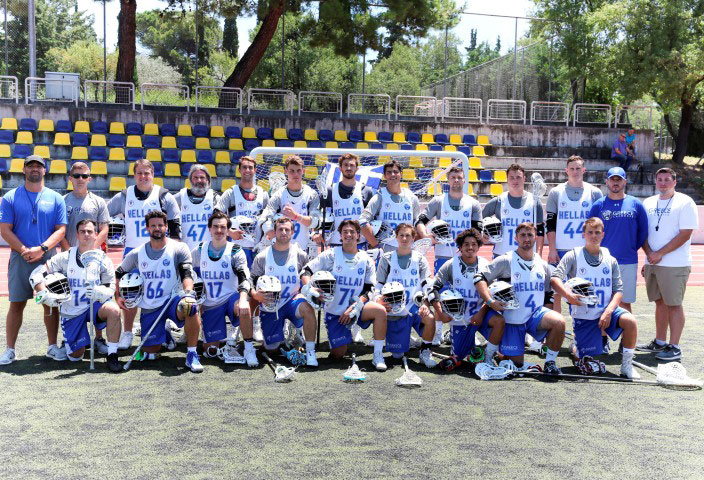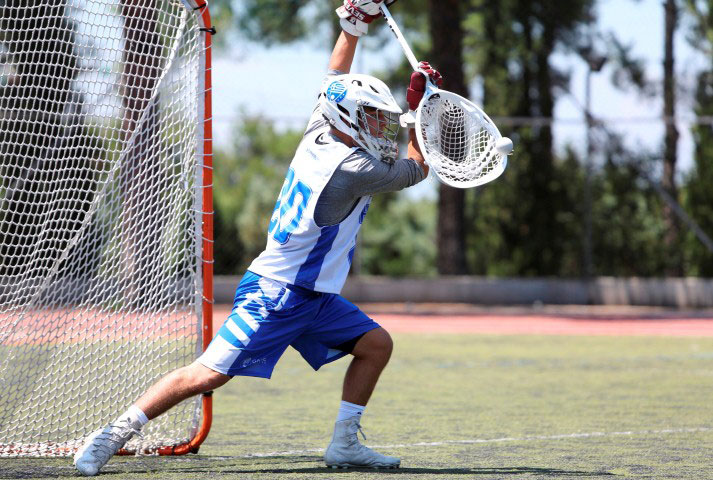Corruption, Transparency and Whistle-blowing
Η Διαφθορά και η Διαφάνεια στον δημόσιο και ιδιωτικό τομέα
Εκδήλωση του Dukakis Center, της Transparency International Greece και της Blueprint for Free Speech
Παρασκευή, 28 Σεπτεμβρίου 2018, 19:00
Bissell Library, ΑCT – American College of Thessaloniki
Το Michael and Kitty Dukakis Center for Public and Humanitarian Service του ACT, η οργάνωση Transparency International Greece και η Blueprint for Free Speech διοργανώνουν εκδήλωση για τη διαφθορά, τη διαφάνεια, και την καταγγελία περιστατικών διαφθοράς στον δημόσιο και ιδιωτικό τομέα, την Παρασκευή 28 Σεπτεμβρίου, στις 7 μ.μ. στη Βιβλιοθήκη Bissell του ACT.
Οι κεντρικοί ομιλητές της εκδήλωσης είναι η Δρ Άννα Δαμάσκου, Πρόεδρος της οργάνωσης Transparency International Greece, o Τάσος Τέλλογλου, δημοσιογράφος – ερευνητής από τον ΣKAI και την εφημερίδα «Η Καθημερινή», ο Βασίλης Μπαρκούκης, καθηγητής στο Τμήμα Επιστήμης Φυσικής Αγωγής και Αθλητισμού (ΤΕΦΑΑ) του ΑΠΘ, η Suelette Dreyfus, λέκτορας στο Πανεπιστήμιο της Μελβούρνης και εκτελεστική διευθύντρια της οργάνωσης Blueprint for Free Speech, και ο John Kyriakou, CIA whistleblower.
Το πάνελ των ομιλητών θα θίξει πρόσφατες υποθέσεις και επίκαιρα θέματα σχετικά μεταξύ των οποίων την χρησιμότητα του whistleblowing για την ανάδειξη περιστατικών διαφθοράς, την ανάγκη προστασίας όσων καταγγέλλουν περιστατικά διαφθοράς, τις νομοθετικές εξελίξεις σε ευρωπαϊκό και εθνικό επίπεδο, κ.ά.
Τη συζήτηση θα συντονίσει η Δρ Λαμπρινή Νάσση, δικηγόρος και διδάσκουσα στο Τμήμα Διεθνών Σχέσεων του ACT.
Η εκδήλωση θα πραγματοποιηθεί στην αγγλική γλώσσα και είναι ανοιχτή για το κοινό.
Περισσότερες πληροφορίες και δηλώσεις συμμετοχής στο This email address is being protected from spambots. You need JavaScript enabled to view it..
